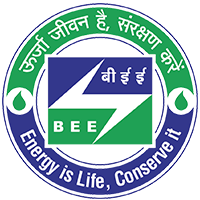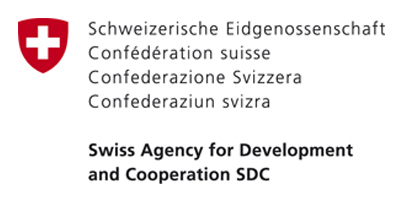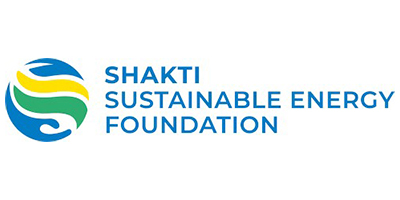Activities
-
Technology development and demonstration
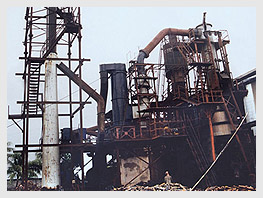
A number of challenges need to be overcome in promoting energy efficient technologies in the Indian MSME sector. Often, the manufacturing processes used in MSMEs are cluster-specific, unique, outdated, and based on largely undocumented traditional knowledge and techniques. There is very little R&D on these traditional manufacturing processes, and they are not even emphasized in detail in technical institutes and engineering colleges. Hence, energy efficient technological solutions for MSMEs are not available off-the-shelf. They have to be developed through a process of study, research, participatory experimentation, and adaptation.
Experiences have shown that an effective method to introduce energy efficient technologies in different MSME sector is through the adoption of a cluster-specific approach for technology development and demonstration programmes. The improved technology could take many forms—better designed furnaces; use of alternate and readily available fuels at little or no extra cost and with less pollution; improved operating practices; systems for recovery and reuse of waste heat from the manufacturing process; and so on.
An improved energy efficient technology is designed to meet the following criteria:
- It is a cost-effective option, offering attractive energy savings and, consequently, lower payback periods.
- It works on fuels and raw materials that are readily available at affordable prices.
- It should be easily acceptable to different end users such as local entrepreneurs, operators, and workers.
- It helps in maintaining or improving the existing quality of the products.
- It minimizes the impact on the existing workforce in terms of loss of jobs.
For maximum effectiveness and widespread adoption, the technology development process must follow a participatory approach. That is, it must involve local stakeholders and be demonstrated under field conditions, utilizing local skills and knowledge to the maximum extent.
-
Technology dissemination
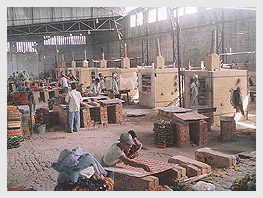
Dissemination of improved energy efficient technologies is best achieved through interventions at the cluster level. A typical MSME cluster has a number of units that are greatly similar in terms of technology, operating practices, and products in proximity. The first step in dissemination is the demonstration of the improved technology at the cluster level, with fine-tuning, monitoring, and validation of its performance over a period of time. Ideally, the demonstration units are owned by progressive entrepreneurs, who are chosen by the local industries associations. Where such formal groups do not exist, the units may be identified by other agencies familiar with the cluster profile (such as the state district industries centres).
Once the owners of the selected units realize the advantages of the new technology and adopt it, other units in the cluster are motivated to follow suit. Technology dissemination requires the creation of an enabling environment at the cluster level to aid in replications. It is, therefore, important to identify and strengthen cluster-level entities, which can deliver and provide support services for the technology in the long term. One of the most critical factors in ensuring the success of the technology dissemination process is the identification and close involvement of Local Service Providers (LSPs)-technically capable person(s)/organizations/institutions, who are familiar with the cluster dynamics (including the nature of the industry and its processes, the entrepreneurs, technologies in use, markets for raw materials and finished goods, and so on)-who can promote the improved technology, as well as provide in-situ advice and technical support to the replication units.
For instance, local fabricators should be capable of making the necessary equipment while adhering to strict quality norms; the raw materials and components for the new/modified equipment must be readily available to entrepreneurs in the cluster at affordable prices (which means putting in place sustainable market linkages); a pool of local technicians must be available to meet the regular maintenance and repair needs of the new technology; a local consultant should be available to encourage and enable continuous interaction between entrepreneurs and technology suppliers, and to provide troubleshooting services that would further strengthen the dissemination process; and so on. However, such trained human resources and their related infrastructural needs are not readily available in MSME clusters. They have to be identified and their capabilities strengthened through intensive and sustained capacity building programmes.
Dissemination of the improved technology is further assisted through awareness generation programmes like workshops, exhibitions, inter-cluster visits for entrepreneurs, and publicity campaigns (media coverage, brochures, posters, audio-visual material, and so on), along with carefully structured capacity building/training programmes for cluster-level stakeholders.
-
Capacity building/training programmes
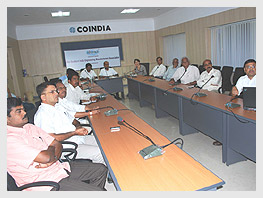
The successful demonstration of an improved energy efficient technology is only the first step in the technology dissemination process. For the sustained uptake of the improved technology, it is vital that the various end users—workers, operators, and entrepreneurs in the demonstration as well as replication units—acquire a sense of ownership over the technology. This can be provided through training programmes that equip the end users with the necessary information and skills to acquire and operate the technology efficiently in the long term. This approach gives them the confidence, resourcefulness, and expertise needed to adapt and innovate on the technology, with minimal dependence on external sources.
Training and capacity building programmes thus form a vital component of interventions to promote improved energy efficient technologies. These programmes typically involve the following broad fields of activity.
- Cluster-level workshops for entrepreneurs for generating awareness on the benefits of the improved technology and the options available to them for acquiring it.
- On-site and classroom technical training programmes for different categories of workers/operators in best operating practices (BOPs).
- Strengthening the technical knowledge and skills of LSPs through training programmes, so that they can meet the requirements of units that adopt the improved technology, and innovate on the technology where needed without external support.
-
Financial support

Finance plays a vital role in influencing the uptake of energy efficient technologies in the MSME sector. In general, MSME entrepreneurs lack sufficient capital resources to invest in energy efficient technology. Recognizing this, the Government of India has put in place a number of schemes to finance energy efficient technologies for MSMEs. MSME sector finance is given priority in the policies of banks and other lending institutions.
Yet, access to loans by MSME units remains low for adoption of energy efficient technology or for upgradation of the existing technology. Individual entrepreneurs, or even industry associations, are often unaware of the different schemes available for financing such technologies, or they simply lack the ability or wherewithal to prepare the financial statements and related documentation required by the lending institutions to support loan applications. On their part, financial institutions and commercial banks often consider MSMEs to be a 'high-risk' sector for lending, entailing high transaction costs. Bankers at the branch level may not have the knowledge or wherewithal to appraise energy efficient technologies for finance. Often, they regard such technologies as 'new and unproven' and, therefore, risky.
The financing of energy efficient technologies in the Indian MSME sector is, therefore, facilitated through schemes that act as incentives, both for lending institutions and for entrepreneurs. The schemes fall under the following broad categories.
Capital subsidy
An MSME entrepreneur applying for capital finance (a term loan to acquire new technology or to upgrade existing technology) is required to contribute a certain percentage of the loan amount as 'margin'. Under the typical capital subsidy schemes offered by various institutions like Small Industries Development Bank of India (SIDBI), Indian Renewable Energy Development Agency (IREDA), and North Eastern Development Finance Corporation Ltd. (NEDFi), a certain percentage of the margin is reimbursed to the MSME entrepreneur after the term loan is sanctioned. This reimbursed 'capital subsidy' amount is directly credited to the entreprenur's term loan account, thereby reducing the liability. The reduced outstanding in the loan account also represents the reduced 'risk' for the lending bank.
Interest subsidy
Under interest subsidy schemes, banks and other lending institutions (such as state financial corporations) are able to borrow funds from institutions such as SIDBI and IREDA at relatively lower rates of interest, for 'on-lending' to MSME entrepreneurs at relatively higher interest rates that are still lower than the rates charged from, say, corporate borrowers. In effect, interest subsidy schemes act as incentives to MSME entrepreneurs to avail of loans at reduced interest rates for both capital investments (new technology, upgradation of technology) and working capital.
Refinance and credit guarantee
Banks and other lending institutions, such as state industrial development corporations and state finance corporations, are encouraged to lend to the MSME sector through financial incentive schemes provided by government supported institutions like SIDBI, IREDA, and Credit Guarantee Fund Trust for Micro and Small Enterprises (CGTMSE). The incentive schemes are structured so that they reduce the costs and risks related to MSME finance, and, thereby, catalyse increased lending to MSMEs. Broadly, these incentive schemes fall under two categories: refinance and credit guarantee.
- Refinance: Institutions like SIDBI and IREDA offer refinance (essentially, long-term loans at soft rates) to banks and other lending institutions that extend loans to MSMEs.
- Credit guarantee: CGTMSE enables subscribing banks to insure themselves against any losses suffered in case MSME loans go bad.
-
Environmental Improvement

As the Indian MSME sector continues to grow in pace with India's overall economy, so does the environmental impact of the MSME sector, in terms of pollution of air, water, and land resources. Energy consumption is intrinsically linked to air pollution, as MSMEs that use fossil fuels like coal, coke, and furnace oil generate considerable quantities of GHG emissions and other pollutants that pose a threat to health, as well as to climate at both local and global levels. Thus, there is an enormous scope to reduce GHG emissions and other air pollutants in the MSME sector by improving the energy efficiency of MSME units by technology upgradation and by developing alternate sources of energy for MSME units based on clean fuels like natural gas, renewable energy sources like solar, and sustainable biomass based technologies.
-
Policy dialogue
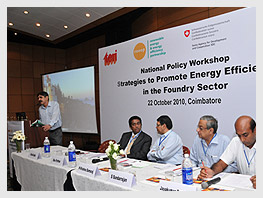
Although the Indian government has progressively created an enabling framework for the promotion of energy efficiency in the MSME sector at central and state levels, there are still a number of barriers related to policy that inhibit the uptake of energy efficiency. Hence, promoting energy efficiency in the Indian MSME sector requires interventions not only at the unit and cluster levels, but also at the policy level.
-
Awareness generation/information dissemination
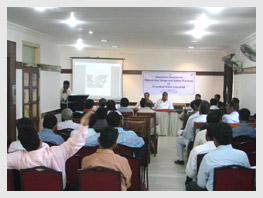
The sustained uptake of energy efficient and/or renewable energy technologies in the MSME sector hinges upon generating awareness and disseminating information on relevant topics among a range of stakeholders at cluster as well as policy levels. Awareness generation is carried out through organizing events, such as the following.
- National and regional level conferences to sensitize policy-makers and institutional stakeholders on issues of relevance to energy efficiency in the MSME sector.
- Cluster-level seminars and workshops to generate awareness on new/improved technologies and options for finance among local entrepreneurs, Local Service Providers (LSPs), bankers, and other cluster-level stakeholders.
- Exchange visits by entrepreneurs from different clusters to share knowledge and experiences with regard to the improved technologies.
- Organizing exhibitions for entrepreneurs and other stakeholders.
Information, too, takes different forms for different stakeholders. Institutional stakeholders as well as the public could access information from brochures, web-based resources and visual media. Factory workers could benefit from pamphlets, posters, and booklets published in local languages. Factory owners and LSPs could get information from comprehensive technical manuals and guidebooks; and so on.
-
Technical assistance

Technical assistance is necessary in a range of specialized fields to support the introduction and adoption of energy efficient technologies in the MSME sector. These include sectoral survey; diagnostic study; energy audits; and facilitatory services for finance.
Sectoral survey
In planning an intervention in the MSME sector, it is first necessary to conduct a survey of different MSME sub-sector orders, so as to identify energy intensive sub-sectors that offer the potential for improving energy efficiency.
Diagnostic study
Once an MSME cluster has been chosen for intervention, it is necessary to conduct a diagnostic study for profiling the units in the cluster and the technologies in use, and estimating the energy usage patterns and energy saving potential in the cluster.
Energy audits
Detailed energy audits have to be conducted on various MSME units in a cluster to gather data on patterns of energy use in the industrial process and to identify areas that offer potential for increasing energy efficiency. An energy audit includes analyses of data on energy use patterns; study and evaluation of existing technologies and available technological options; and assessment of the needs of the cluster, which must be factored into the technology demonstration and dissemination process.
Facilitatory services for finance
Often, entrepreneurs as well as LSPs require assistance in obtaining finance to facilitate the adoption of the energy efficient technology, for instance, through preparation of detailed project reports (DPRs) to support their loan applications, and, where feasible, drawing up proposals for funding under the Clean Development Mechanism (CDM).
-
Sustainability/conservation of natural resources

Low energy efficiency in the MSME sector implies excessive and unsustainable use of India's limited fossil fuel reserves, as well as more rapid degradation of natural resources—air, water, soil, and forests. For instance, burning coal in an inefficient furnace leads to wastage of substantial quantities of useful heat. This not only means increased production cost, but also that more coal than required is being extracted for use by the concerned MSME. Overall, this translates into unsustainable use of coal reserves, as well as increased degradation of land and pollution of water bodies and the atmosphere during the mining, refining, and transport of coal.
Energy efficiency improvement in the Indian MSME sector can help in reducing the overall consumption of non-renewable natural resources like coal and oil, as well as contribute to protection of natural resources like air, water, and soil, by improving the energy efficiency of the existing (low efficiency) fossil fuel-based technologies and by replacing the existing fossil fuel-based technologies with energy efficient options based on renewable energy sources like wind and solar, and sustainable biomass-based technologies.


